Table of Contents
ZEN GARDEN: INTRODUCTION
The Zen garden is a place of peace, relaxation, and meditation. Its minimal lines and rigorous appearance create an intimate space in which to relax and connect with the surrounding space, letting go of the tensions and stress accumulated over the course of the day.
Zen gardens have ancient origins and profound meaning, but it is very easy to recreate them at home or in the garden to enjoy their benefits. Let’s find out what the Zen garden means, what its main components are, and how to create a Zen table garden or a Zen garden on the terrace, outdoors, or in the garden.
The Zen garden is the perfect example of the fusion between oriental philosophy and the art of gardening, constituting a place for meditation and interior reflection, both while it is being created and once finished and taken care of in every detail.
What is the Zen garden
The Zen garden, in Japanese Karesansui – dry nature, is a type of Japanese garden, which differs from other types because it lacks water (although in a modern Zen garden the use of water is foreseen). It is made up of sand, gravel, and rocks that are used to simulate the movement of water courses as well as ornamental plants (inserted in the Zen garden after its creation).
Eastern culture is making its way into people’s hearts and minds, by virtue of helping human beings to take better care of themselves, meditating but above all finding time to relax.
The karesansui is a type of Japanese garden and literally means “dry nature”, where the word used for “nature” is Sansui (“mountains and water”) which appears within the Sakuteiki gardening treatise written in the 11th century.
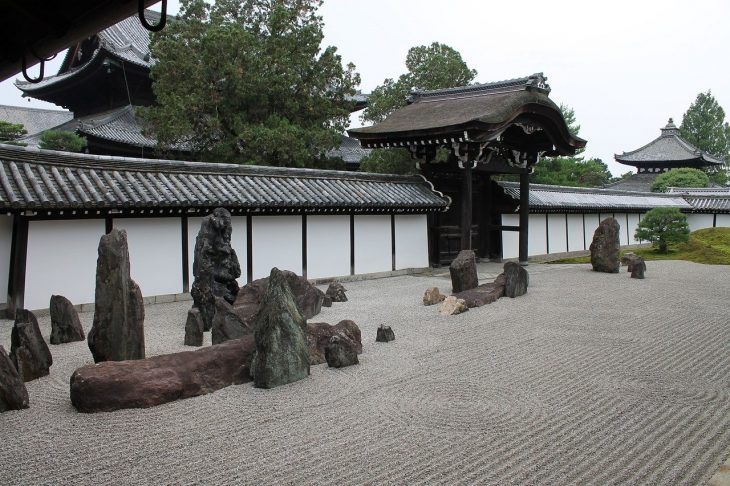
The characteristic of karesansui is the absence of water, which is one of the four basic elements of the Japanese garden together with the rocks, the growth of plants, and the elements of the landscape. In fact, even gardens where there is rich vegetation, but no water flows, are still considered karesansui.
Usually, stones, gravel, or sand are used to represent streams or ponds instead of using the water itself, for example by setting up expanses of white gravel modeled to simulate waves and flanked by bridges or other structures typically linked to water.
For the Japanese tradition, the Zen garden represents the link between man and nature and each element inserted inside it has a very specific symbolic meaning.
- Water: always present, physically or represented by sand and gravel, is the symbol of life that flows
- Rocks: smooth and rounded, they represent the stability of man, which is achieved through meditation. They have a precise location in space, are positioned to create a path to symbolize the path of man, and are always odd
- Plants: they are the living element of the Zen garden and represent the soul, which is nourished and cared for thanks to the care dedicated to the Zen garden. Like the rocks, they have their own precise location and are positioned in the garden according to a triangular pattern
In Zen gardens, rakes are used to loosen the sand and create designs. This action is done precisely to simulate watercourses in Zen gardens. The motifs created are circular or wave-shaped and allow those who make them concentrate and undertake the path of meditation.
The peculiarity of Zen gardens lies in the fact that once these motifs have been designed they are erased, to then be recreated and erased again, to symbolize the mutability of life and to remember that the real importance of the Zen garden is not found in the final result, but in the path that leads to it, in the feelings of well-being and peace that are felt in the creation of the motifs.
For the Japanese tradition, the Zen garden represents the link between man and nature and each element inserted inside it has a very specific symbolic meaning.
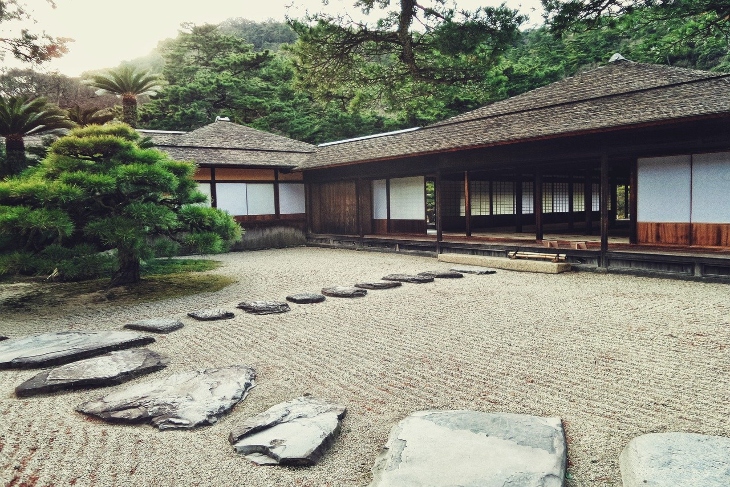
HISTORY
The karesansui were present inside the noble palaces in latent form, in the sense that they had not yet been codified as separate spaces, but inserted in larger contexts that also contained water. The karesansui was therefore one of several portions of a garden and not a garden in itself. The karesansui was born inside the shindenzukuri noble palaces of Kyoto of the Heian Period (794-1185)
The elevation of the karesansui to an independent model of the garden was achieved within the monasteries of Zen Buddhism during the Muromachi Period (1336-1573), where they were intended as an abstract representation of reality. The Zen monks carried out the conceptual development of both the sense and the space of the karesansui, exploring its expressive possibilities and transforming it into a philosophical model of world view.
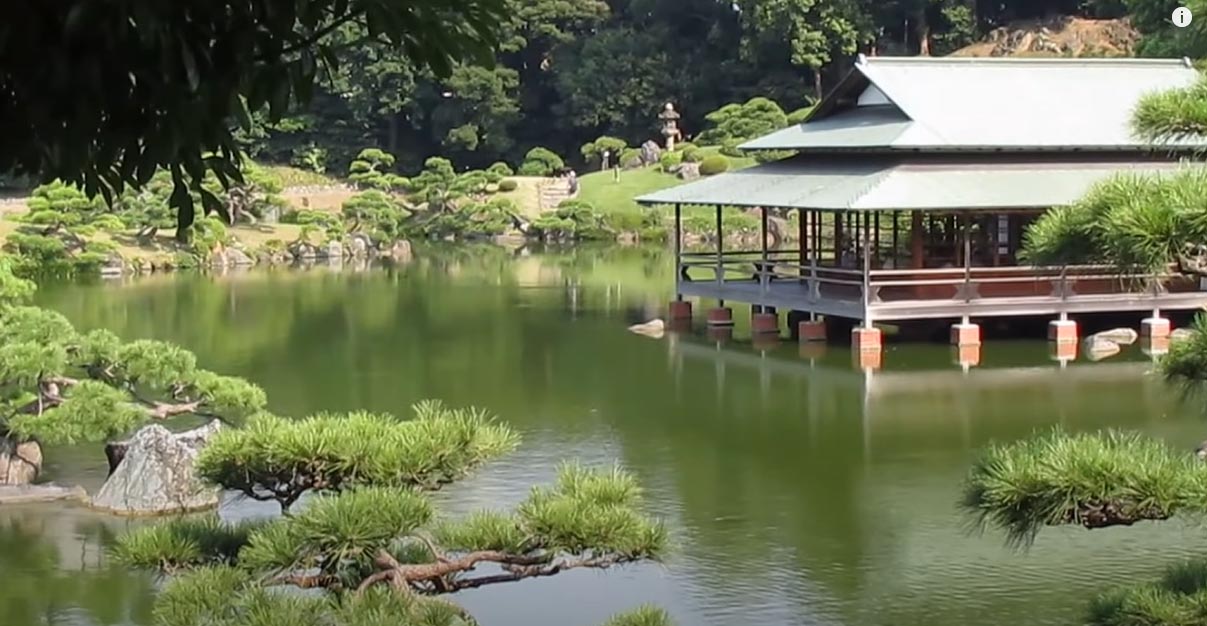
The success of karesansui in both the secular and religious fields is also due to the fact that it eliminates one of the basic needs of Japanese gardens, which is to have a source of water supply. Thanks to this type of garden it was possible to build green areas in areas where water was scarce or almost completely absent.
The concept of “Zen garden”, with which karesansui are often identified, is considered a false historical by many leading experts on Japanese gardens and Buddhism. They argue that it is a 20th-century Western creation that has nothing to do with the Japanese gardening tradition.
In fact, the aesthetics of karesansui are not unique to Zen temple gardens but are historically present in residences and commercial premises. At the same time, the gardens around Zen temples can have many different styles, and dry gardens are just one of them.
ORIGIN OF THE TERM
The term “Zen garden” first appeared in Loraine Kuck’s 1935 book entitled “One Hundred Kyoto Gardens”, while the first use of the term appeared in print in 1958. This may imply that some Japanese scholar may have simply followed the Western use, adopting the popular concept of “Zen garden” because it is already used and common among foreigners.
FEATURES OF A ZEN GARDEN
Peace, harmony, and beauty: these are the three fundamental elements that characterize the art of the Japanese Zen garden, born from the oriental tradition of Japanese gardening.
First of all, a Zen garden should be minimal. Its main feature is that of being an environment that favors meditation, immersed in nature and simplicity.
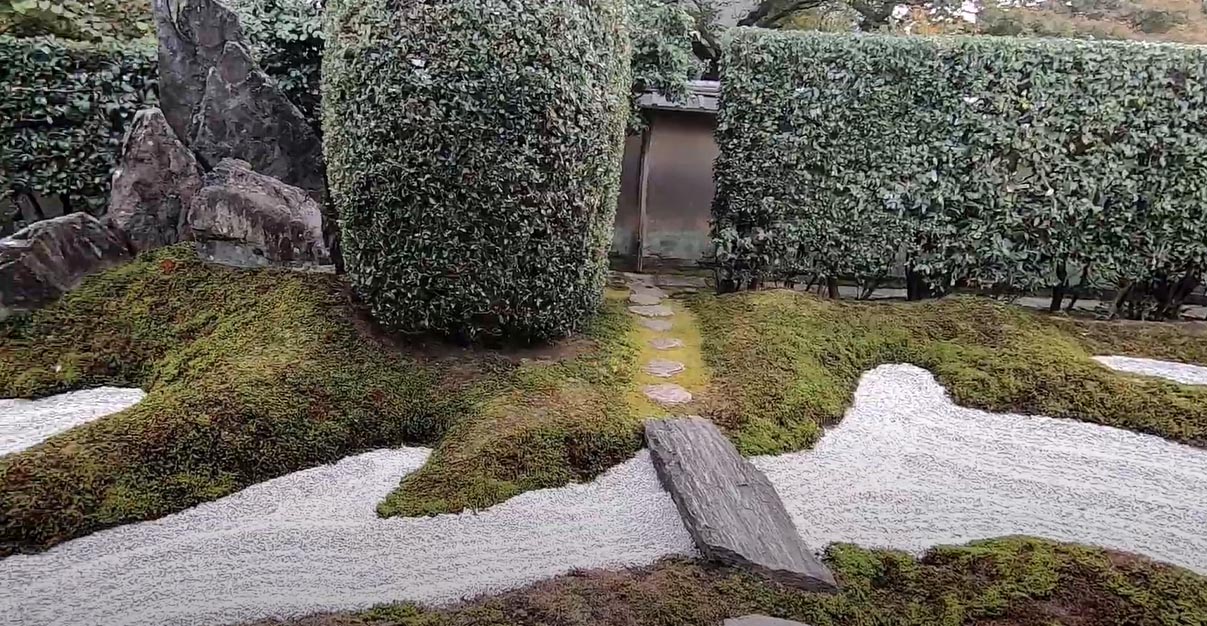
It is notoriously known that each country has its own traditions and styles, also and particularly architectural ones, which largely depend on the mentality of the culture to which they are part. The oriental gardens in their extreme charm and enchantment are generally asymmetrical and composed of elements with an odd number, a curiosity is precisely this, we try to insert objects that can form triangular figures in their composition.
Later we will see how to make a Zen garden but first, we see that there are some common elements that we can find albeit with some differences in each of them:
- The nantei is first of all defined as a south garden, different and structured in a different way depending on the place;
- The shoin, a writing room, is extremely typical of Japanese architecture, which we find in various buildings;
- The hōjō is instead the abbot’s room, generally accompanied by a small courtyard;
- The kokoro is the heart of the Zen garden, where the maximum essence is contained.
- Obviously these elements are part of a larger architectural and meditation space.
ESSENTIAL ELEMENTS OF THE ZEN GARDEN
Zen gardens have essential elements that cannot be missing. Before seeing what they are, let us remember once again that the essential elements are also only natural elements.
Among these, we find sand and stones whose meaning is totally opposed to that of water.

Natural elements have a very specific meaning:
Stones and rocks represent stability, synonymous with inner peace in the individual that can only be achieved through a profound reflection on one’s person and through careful meditation;
Water, on the other hand, represents in its simplicity and changeability everything that is unstable and mobile in the world;
Finally, through the cultivation of plants, you take care of your soul. The most common plants are fern and moss.
None of them has a mere aesthetic function, everything has a sometimes cryptic meaning whose explanation is left to free interpretation. Everyone can see in them a different meaning to find the answers he is looking for and that can lead him to Zen.
However, in some gardens it is possible to find water, these are special and uncommon places where spirituality and faith are in their strongest form. One, in particular, the most symbolic, the Shinden-zukuri, a garden with very ancient origins.
Different from all the others because inside there is a large amount of water, generally a lake or a pond of modest size. Compared to the others it is the most important precisely because it represents and is built in the name of Buddha, in fact, it is not difficult to find various statues that represent the divinity inside.
HOW TO DESIGN A ZEN GARDEN
Creating a Zen garden is not very simple but it is possible by following a few rules to be able to create one that remembers it very much. Let’s assume that these are spiritual places, certain sensations and meanings are impossible to replicate, but you can aspire to create a Japanese garden where you can relax in complete tranquility.
Certain guidelines must be followed to create a perfect oasis that is able to reconcile gardening and meditation, almost like Buddhist monks. An environment of this kind can be useful to approach the Zen philosophy and be able to find inner peace by building a small corner of personal paradise.
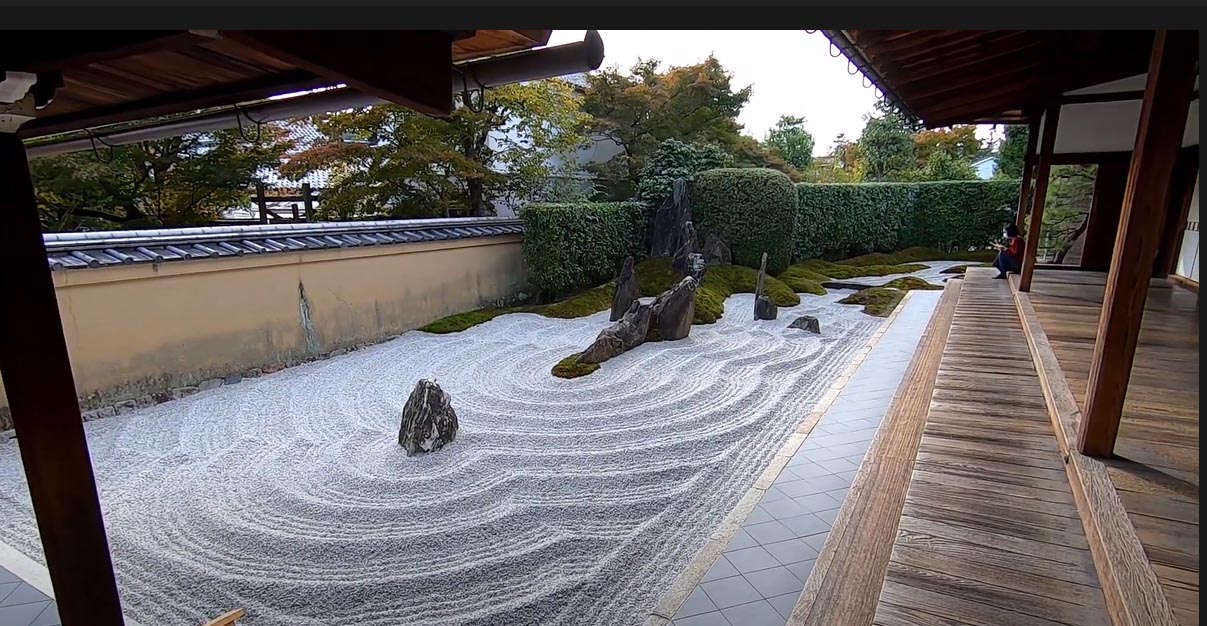
First of all, it is necessary to conceive and design a Zen garden and secondly to insert all the typical and indispensable Zen garden elements.
To begin with, you need to have little-worked rocks, in odd numbers. Remember that disparity and asymmetry are also fundamental to give everything a natural look;
It will be necessary to create a sort of small path whose exit should not be visible from the entrance; Evergreen plants will be chosen so that the garden is not affected during the winter. Generally, female plants are chosen, from flowers, a symbol of beauty and fragility to be included on the path. Male plants, lower than the first ones, should be placed at the entrance to the garden, generally consisting of deciduous leaves so that the visitor bows before the Japanese garden;
Obviously, there are stretches of sand that can be fenced off to keep them in place. We understand that creating a full-size Zen garden can be very challenging and expensive but there are small table Zen gardens.
Creating a Zen garden can be a solution to create a small moment of relaxation. Many of them are mostly temporary, so you can change their shapes and change their appearance at any time.
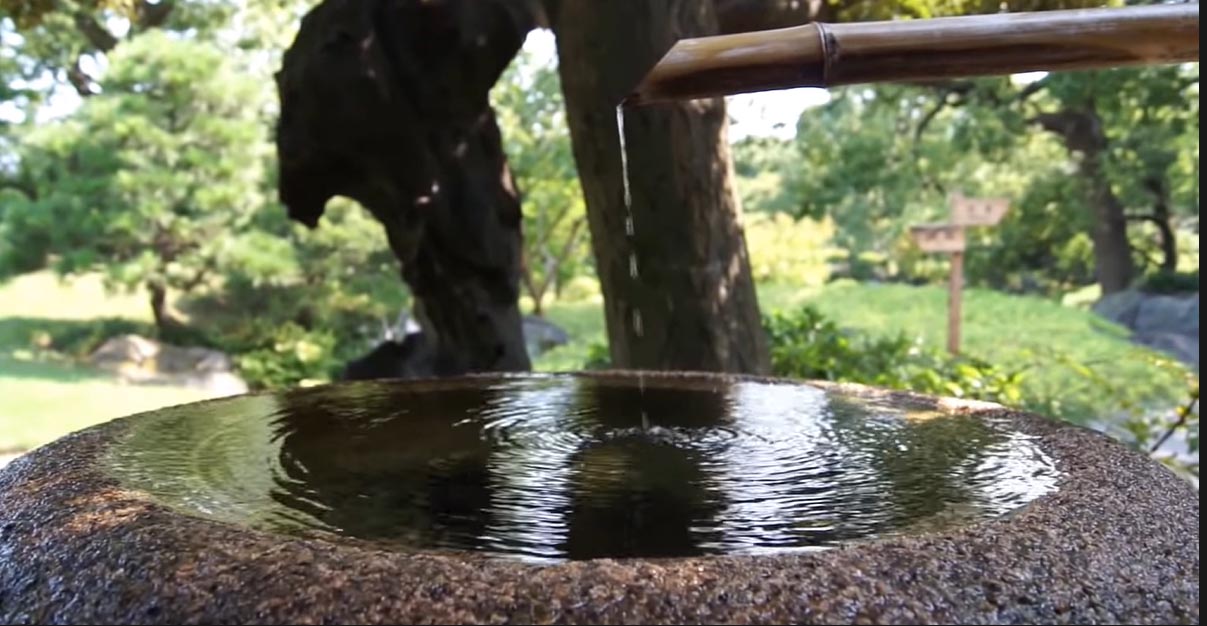
What plants are in a Zen garden?
The plants inside a Japanese Zen garden have a very specific meaning and must be chosen carefully. The Zen garden is a place of peace and reflection and some plants stimulate meditation better than others.
To recreate an authentic outdoor Zen garden, plants of Japanese origin or in any case also present in Japan will be chosen. First of all, bamboo, followed by Ginko Biloba, Weeping Willow, Japanese Yew, Juniper, Cypress, Elm, and flowering plants that symbolize rebirth such as Azalea and apricot.
What do you need to make a Zen garden?
Recreating a Zen garden of the same size as Japanese Zen gardens is practically impossible, just think that Japan’s most famous Zen garden, the Rock Garden of the Ryoanji Temple, measures 250 square meters.
However, this does not mean that you cannot recreate a Zen garden in the garden, outside the home, or for those who do not have space, a Zen garden on the terrace.
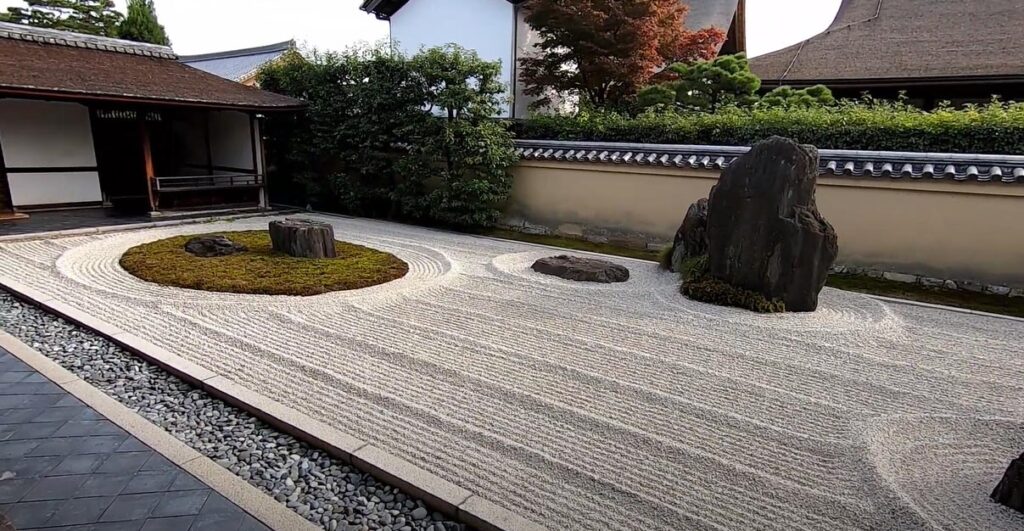
Before creating a Zen garden it is necessary to remember that the main elements to create a Zen garden are asymmetry and disparity, seen by the Japanese as symbols of the authenticity of nature (everything that is symmetrical is considered artificial) and contrast, high elements that they are flanked by low elements, always following the concept of asymmetry.
Creating an outdoor Zen garden is easy even for those who don’t have a green thumb, since traditional Karesansui doesn’t need water to live.
In this case, it will be enough to equip yourself with stones, sand, gravel and create your own meditation space, preferably delimited by a wooden or stone structure to prevent the sand base from losing its original shape. The key accessories for creating sand drawings are rakes and accessories for sand smoothing after drawing.
The 5 most beautiful Zen gardens in Japan
Places of prayer and meditation, but also an unmissable attraction for those who want to immerse themselves in Japanese culture. Let’s discover the most famous Zen gardens in Japan.
Zen gardens are among the most important elements of Japanese culture. These are “dry gardens”, designed in monasteries to induce the monks to prayer and meditation. The three basic elements that compose them, water, stones and plants, are arranged in such a way as to create a harmonious environment. Balance, symmetry and simplicity are the sensations that all Japanese Zen gardens, despite their singularity, transmit. The same virtues that Zen philosophy cultivates.
Among the many Zen gardens scattered throughout Japan, we have selected 5 that stand out for their beauty and history.
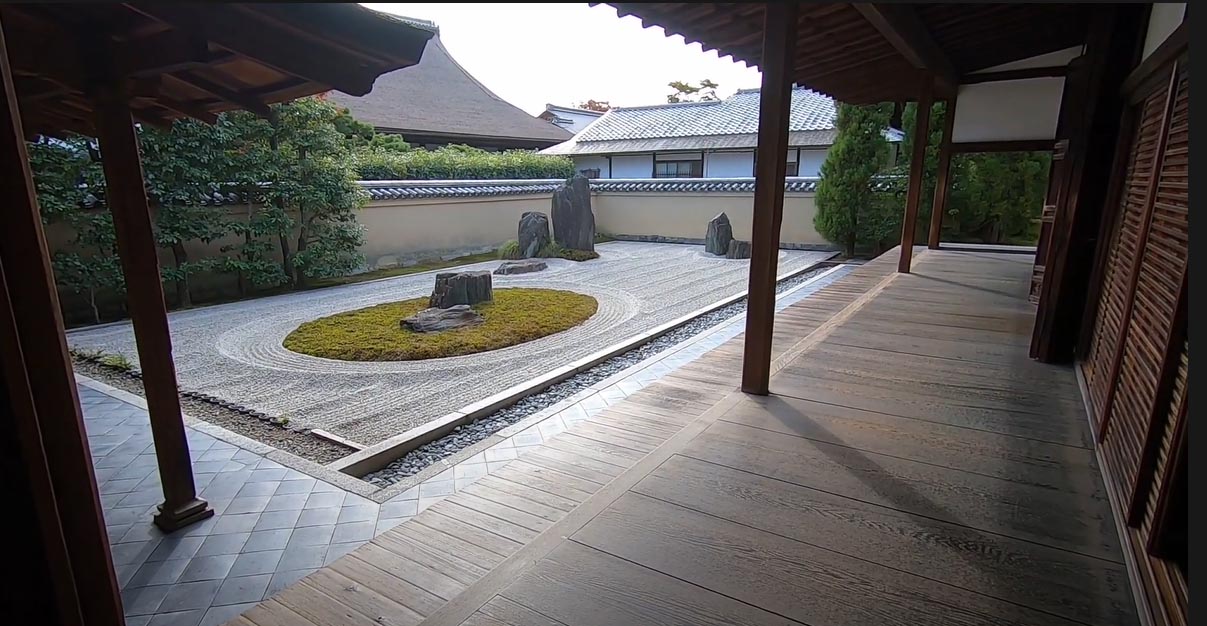
Daisen-in, Daikotu-ji, Kyoto
The gardens of the Dainsen-in temple in Kyoto are one of the best places to approach the tradition of Japanese gardens. The rock garden surrounding the temple complex is a metaphorical representation of life. A cascade of water descends from a hill and is channeled into a river that flows down to the sea (a small lake). These three elements, waterfall, river, and sea, represent respectively birth, life, and death.
Kanazawa, beauty and harmony
The Kanazawa City Garden is considered to be one of the most beautiful in all of Japan. It is called Kenrokuen and is definitive as the garden of the six combined elements: immensity, solemnity, planning, venerability, freshness, and landscapes. A very suggestive place, which from the very first moments leads to calm and contemplation of the surrounding nature. The real dry garden is located at the back of the Tea House which stands in the center of the park. Combed sand, symmetrically arranged rocks and bubbling water invite you to a contemplative stop.
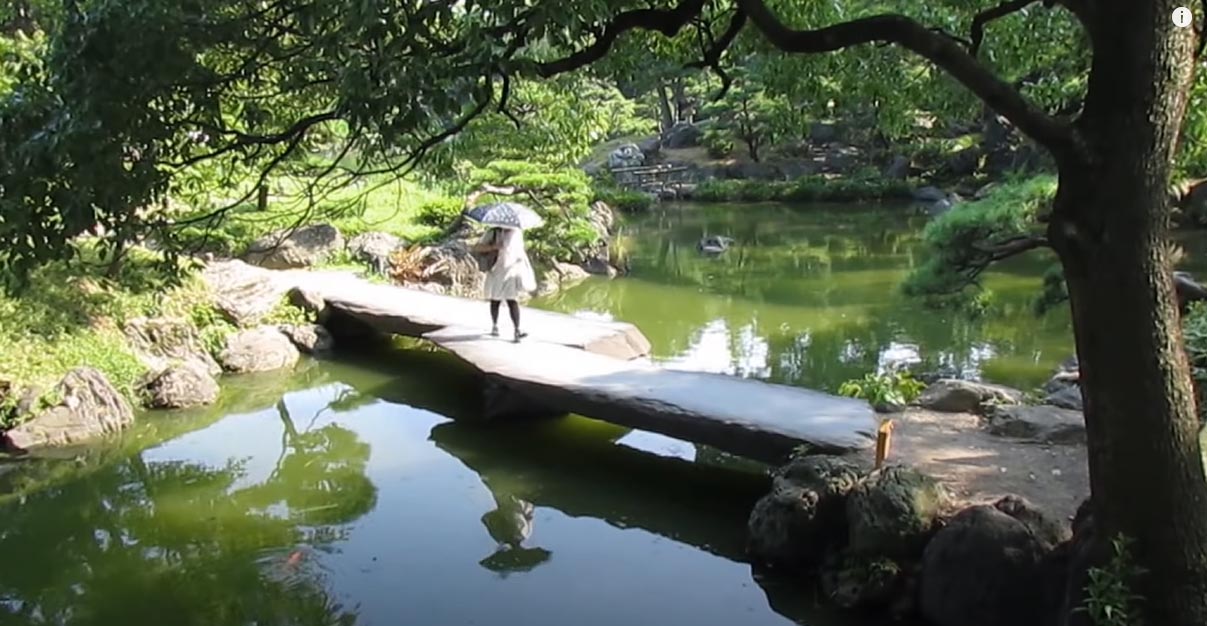
The Kaikakuen Zen Garden by Mito
Together with that of Kanazawa, the Kaikakuen of Mito, a town north of Tokyo, is also one of the unmissable in Japan. The name literally means “garden to be appreciated together with the people”, because it was one of the first public gardens in the country. The whole park is a riot of plants that change color with the change of seasons, with gravel paths that lead to the most suggestive corners. The Zen garden is located at the back of one of the tea houses inserted in the park. A bed of perfectly combed white sand welcomes rocks with soft shapes, which symbolize the phases of life.
Ginkaku-ji The Silver Pavilion, Kyoto
This Zen temple stands in the eastern mountains of Kyoto. The most characteristic element of the garden is a 2-meter-high cone of sand, which represents Mount Fuji, the most famous mountain in Japan. The two-story temple, perfectly integrated into the surrounding landscape, is inspired by the famous Golden Pavilion, one of the most visited temples in Kyoto.
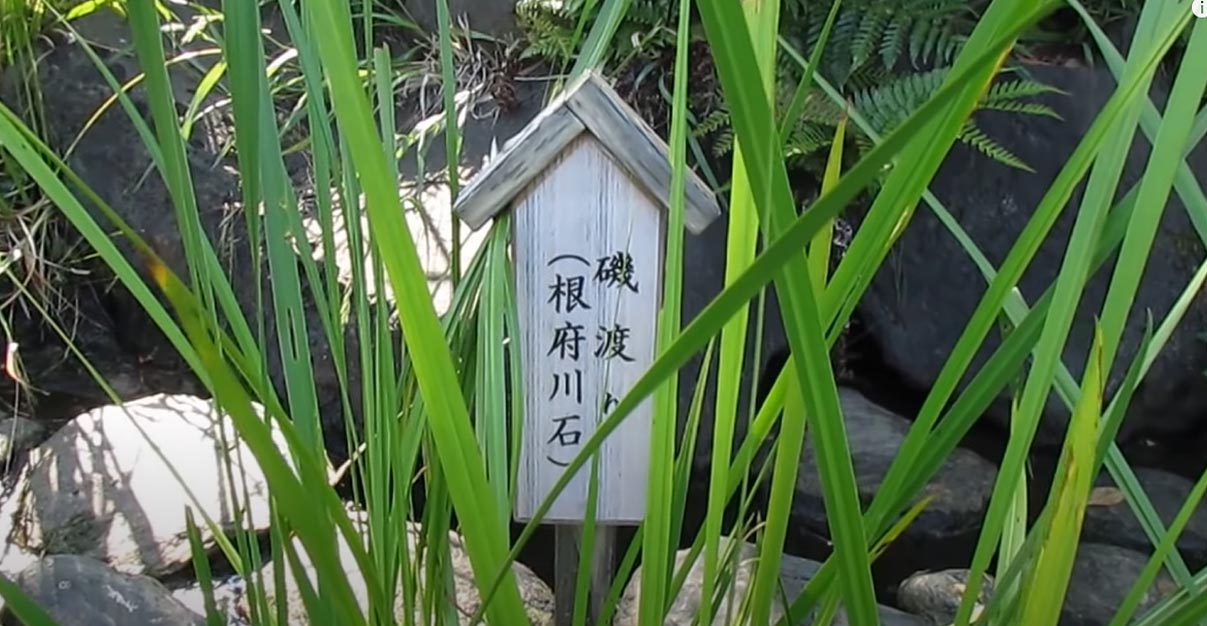
Kencho-ji, Kamakura
Built-in the mid-13th century, it is the oldest Zen monastery in Japan. The garden that surrounds it was designed by Muso Soseki, one of the leading Japanese landscape architects. The shape recalls the Chinese character that indicates the term “mind”, to testify what was the will of its creator. Create a place for meditation and recollection, where the visitor could leave the worries of the modern world outside and relax surrounded by the sounds of nature. And indeed, this garden is the perfect place to find inner calm and balance.
Apply the Zen philosophy
The Zen garden: a work, a constantly changing art, an oasis of peace that can be created almost anywhere, to escape the hectic city life, to carve out some time to meditate and relax. It is a way of life and, as well as the succession of the seasons, the Zen garden also needs change and follows the movements of nature and time. This is why it needs to be cared for and renewed continuously.
To be able to approach the creation of a Zen garden, it is necessary to enter a minimalist and essential perspective, with a few elements placed in an orderly and precise way. To benefit from the privileges it can offer to those who take care of it, one must embrace and share the principles of Zen philosophy, in which the three pillars are: thinking, reflecting, meditating. It is a method of spirit, conscience, and mind. Those who practice this current of thought, after meditation, to create harmony between mind and body, usually recite the “Sutras” (from the Sanskrit “thread”, “to sew”), a set of sequential teachings expressed in a synthetic way, some of which are descended from Zen masters, others from the words of the Buddha. Often, the Sutras are recited together with other meditators, to become part of one with the environment and the people around them. Taking care of a Zen garden, or keeping a Bonsaki on your desk, can help you find an idea, an inspiration, the creative vein you never thought you had, or simply to get back in harmony with the environment and with yourself.
Zen garden in the garden, step by step
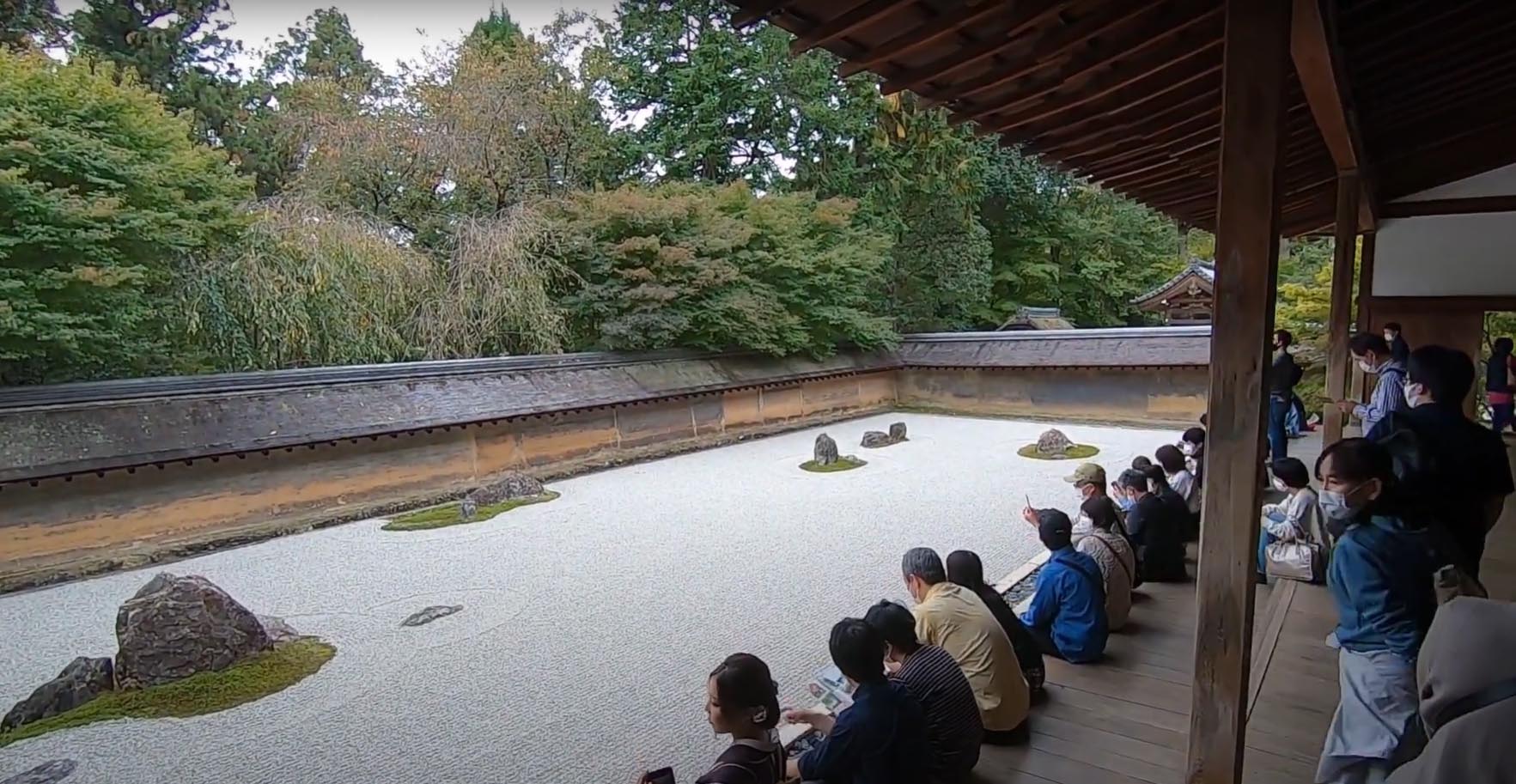
Already the Zen garden plant belongs to the “considered reassurance”, that the garden must serve later. That’s why a clearly structured step-by-step guide follows, so you can let your mind wander as you go through the individual points:
1. Set area
The area for your dry garden should be as central as possible, but as far away as possible from the most used paths. Perfecting would be natural if it is still possible to glimpse surfaces Just raked from the desk, because not only “Zen with the rake”, but also pure spectacle is already guaranteed.
Basically, size doesn’t matter, so you can set them after you’ve found the right place. For its selection it is also crucial that it should be as flat as possible of the garden – at least for the gravel area, hillocks can be installed wonderfully when planted with moss.
Whether it’s a miniature zen outdoor garden it is because there is still a lot more going on in your garden or you do the whole zen princes garden, thus reducing garden maintenance to 10 minutes annual use, it is only important if you don’t want to include very small shrubs or trees. Sure possible, but a tree with moss and a square of gravel around it looks pretty silly.
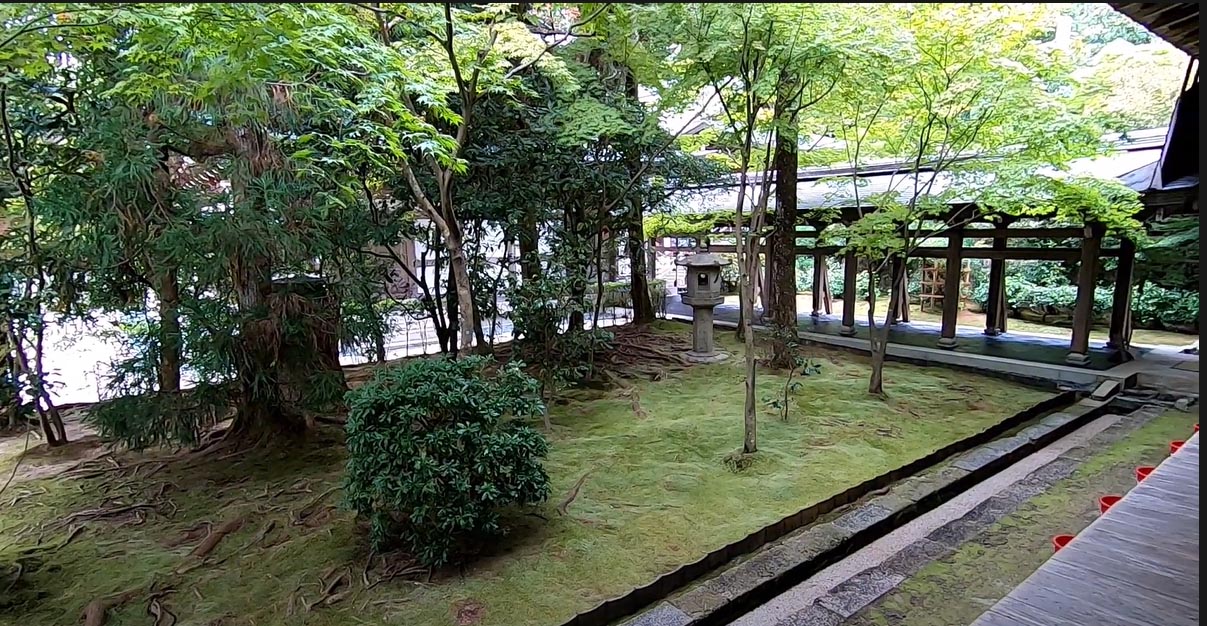
2. Level the floor
Pure relaxation brings the Zen garden only when the eye can rest on the gravel surface, and cannot if, in the small bumps of the floor surface, the light constantly breaks. Then take the level and drive and check the intended area in all directions. The smallest knoll of spades helps flat, gentle heights can be brutal with the lawnmower, but effectively paved (best with a blunt mower because the knife has to be sharp likely if approaching ground surfaces).
If the ground is flat, it may be necessary to compact the soft ground, with the roller or by give it time to settle.
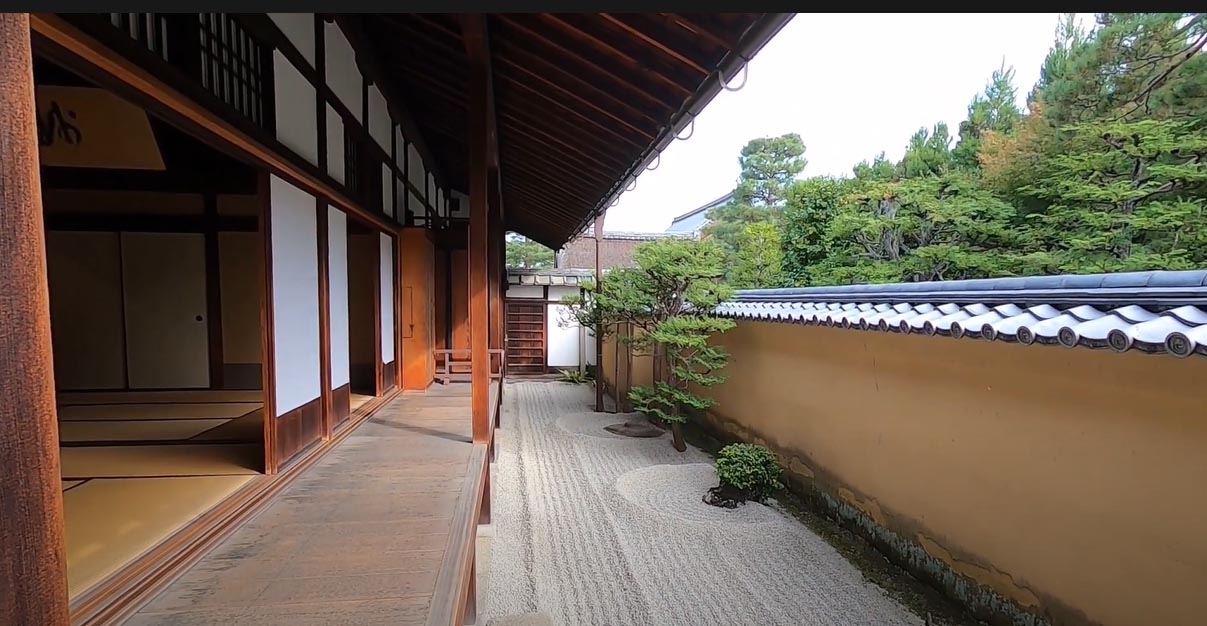
3. Select the border barrier
A border demarcation helps a lot if the Zen garden is to be integrated into the garden. In the absence of old monastery walls, you will need to provide grass stones, small shrubs, or the like.
4. Gravel to be filled
Check with a local building materials supplier which gravel / coarse sand is best suited for your project. There are different sizes, sharp-edged stones, and round pebbles; The latter can be raked on smooth lines, while the sharp-edged gravel brings more expression to the surface.


0 Comments